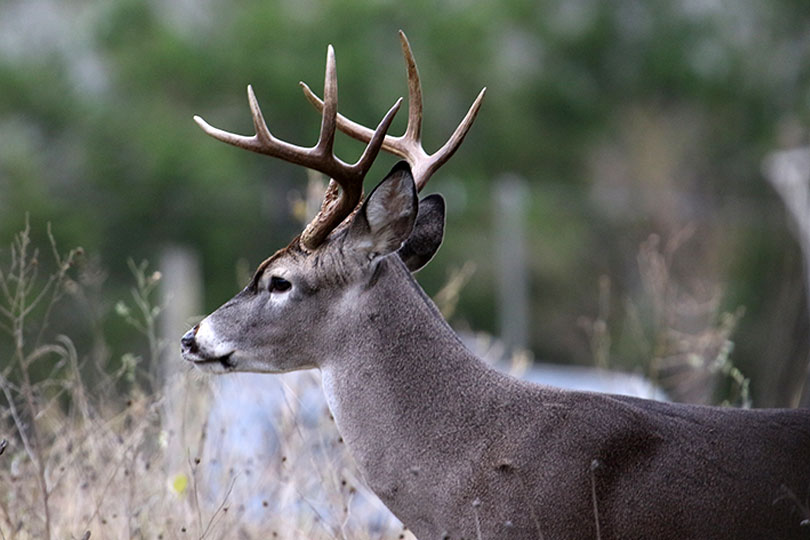The Texas Parks and Wildlife Department (TPWD) reminds hunters to properly dispose of a deer carcass from harvested deer to help prevent the spread of infectious diseases in deer. This is particularly important for those taken inside the Trans-Pecos, South Central and Panhandle Chronic Wasting Disease (CWD) Containment and Surveillance Zones.
“Because many hunters process their own deer, they are key players in preventing environmental contamination or minimizing the spread of diseases such as CWD,” Alan Cain, TPWD white-tailed deer program leader, said. “One possible way that disease can spread is by the transportation and improper disposal of infected carcass parts.”
Deer can become infected with CWD if they come into contact with other infected deer or an environment contaminated with CWD prions. While CWD prions are found ubiquitously throughout the body of an infected deer, they are known to accumulate in the brain, spinal cord, eyes, spleen and lymph nodes.
Additionally, hunters cannot take whole deer carcasses, or carcass parts that contain brain, spinal cord, eyes, spleen or lymph nodes, out of the CWD Containment and Surveillance Zones or from another state or country known to have CWD.
“We recommend hunters in the CWD Containment and Surveillance Zones quarter deer in the field and leave all inedible parts at the site of harvest, or preferably dispose of in a landfill or bury at site of harvest, if possible,” Cain said.
He noted hunters wishing to take an intact skinned or unskinned deer head to a taxidermist outside a CWD zone or from another CWD positive state or country may do so, but they must obtain the Deer Head Waiver at any TPWD CWD check station or on the TPWD CWD website. The waiver should be completed and kept with the hunter or with the deer head until it reaches the taxidermist.
Safe-handling recommendations include avoiding cutting through bones, spine or brain when processing deer carcasses. If a hunter is processing a harvested deer in camp or at home, place carcass parts in trash bags and properly dispose of them through a trash service or landfill.
Safe parts of the deer to transport include quarters or other portions of meat with no part of the spine or head attached and hides or capes from which all excess tissue has been removed. Antlers, including antlers attached to skull plates or skulls cleaned of all muscle and brain tissue, and finished taxidermy products are also safe to transport.
Carcass movement restrictions do not apply if the carcass will not be moved outside of a CWD zone.
Hunters who harvest deer and other CWD-susceptible species should check the Outdoor Annual online or through the mobile app to find check station requirements, dates and hours of operation.

